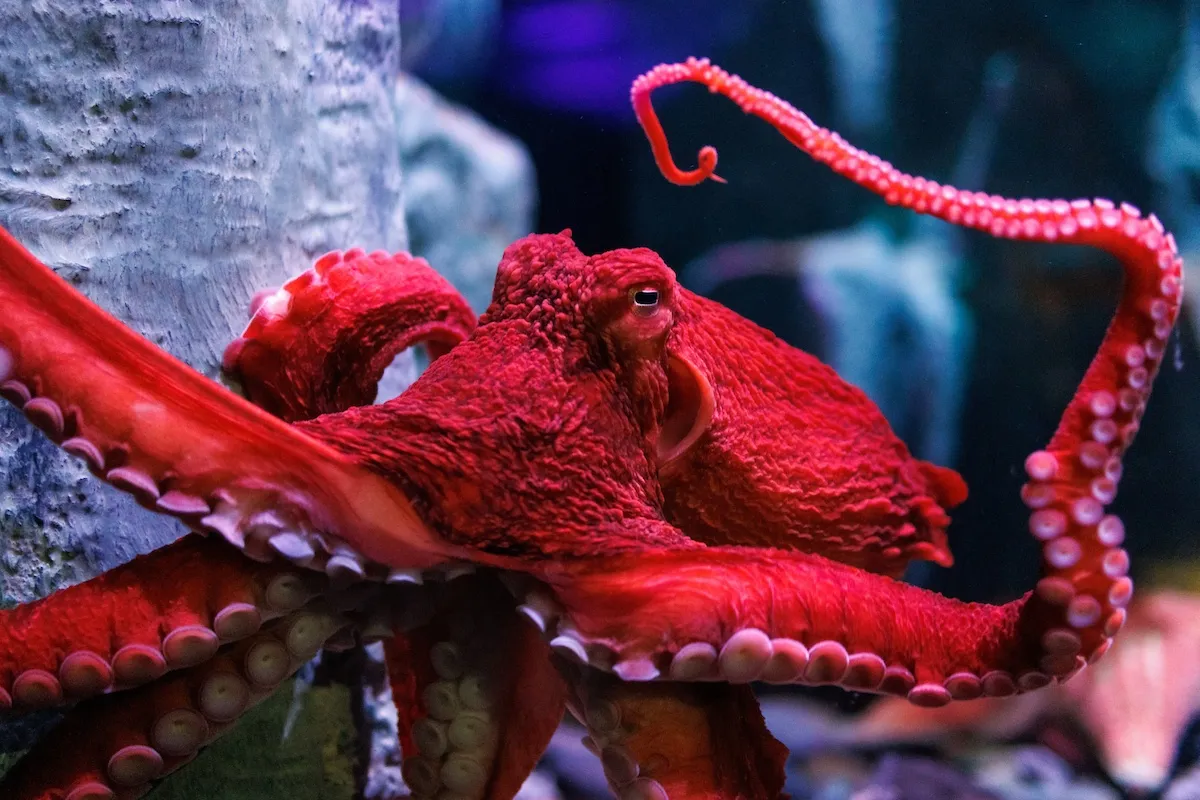On Aug. 5, wrestlers from all over the world experienced six of the toughest minutes of their athletic careers in Paris.
Wrestling was one of nine sports represented at the first modern Olympics in 1896, but archaeological evidence suggests wrestling has much earlier origins. One of the oldest sports in the world, carvings and cave drawings show that humans were wrestling one another 15,000-20,000 years ago.
But as good as humanity’s premiere athletes are, there’s one marine invertebrate that would give even the most accomplished wrestler a run for their money on the mat (or maybe a pool): the Giant Pacific Octopus.
Tools of the Trade
While you won’t see any Stone Cold Stunners, House Calls, or Rock Bottoms from the Giant Pacific Octopus (“GPO,” for short), their eight arms make them more than capable of grasping anything in their reach. With a potential armspan of 30 feet, there’s not many places a human wrestler could hide from a GPO inside the 29.5-foot diameter of a regulation wrestling ring.
With enough strength to move over 700 pounds, GPO’s are skilled at keeping hold of and pulling apart prey like clams, crabs, and lobsters. So if the GPO picks an ankle, good luck getting it back.
The judges might frown on their use, but the GPO also brings a powerful beak and venomous secretions to the mat. Perhaps the greatest asset the GPO has, though, is the element of surprise. These masters of camouflage can blend into their surroundings by squeezing layers of pigment-filled cells called chromatophores to mute or intensify the color of their skin. By subtly adjusting its chromatophores, a GPO can make itself more vibrant as a warning to predators or blend so thoroughly into its environment that it can sneak up, entirely unnoticed, on its prey (or, say, an opposing grappler).
In addition to their offense, you won’t have an easy time getting your hands on an octopus that doesn’t want you to. The only part of an octopus’s boneless body that’s hard is its beak, which is made of keratin, the same material found in our hair and fingernails. With no bones to get in the way, the GPO’s body is tremendously flexible, so there aren’t too many holds or submissions that will work on them. And if you do manage to grab onto a GPO, prepare for a literal blackout. When threatened, a GPO can launch a cloud of ink to confuse predators and cover its escape.
The Gold Standard
With its world-class strength, flexible physiology and arsenal of tricks, the Giant Pacific Octopus is the kind of opponent that could give any human wrestler a run for their money — as long as it’s in the water. That’s why this skillful cephalopod gets our vote of approval to join the international competition.
